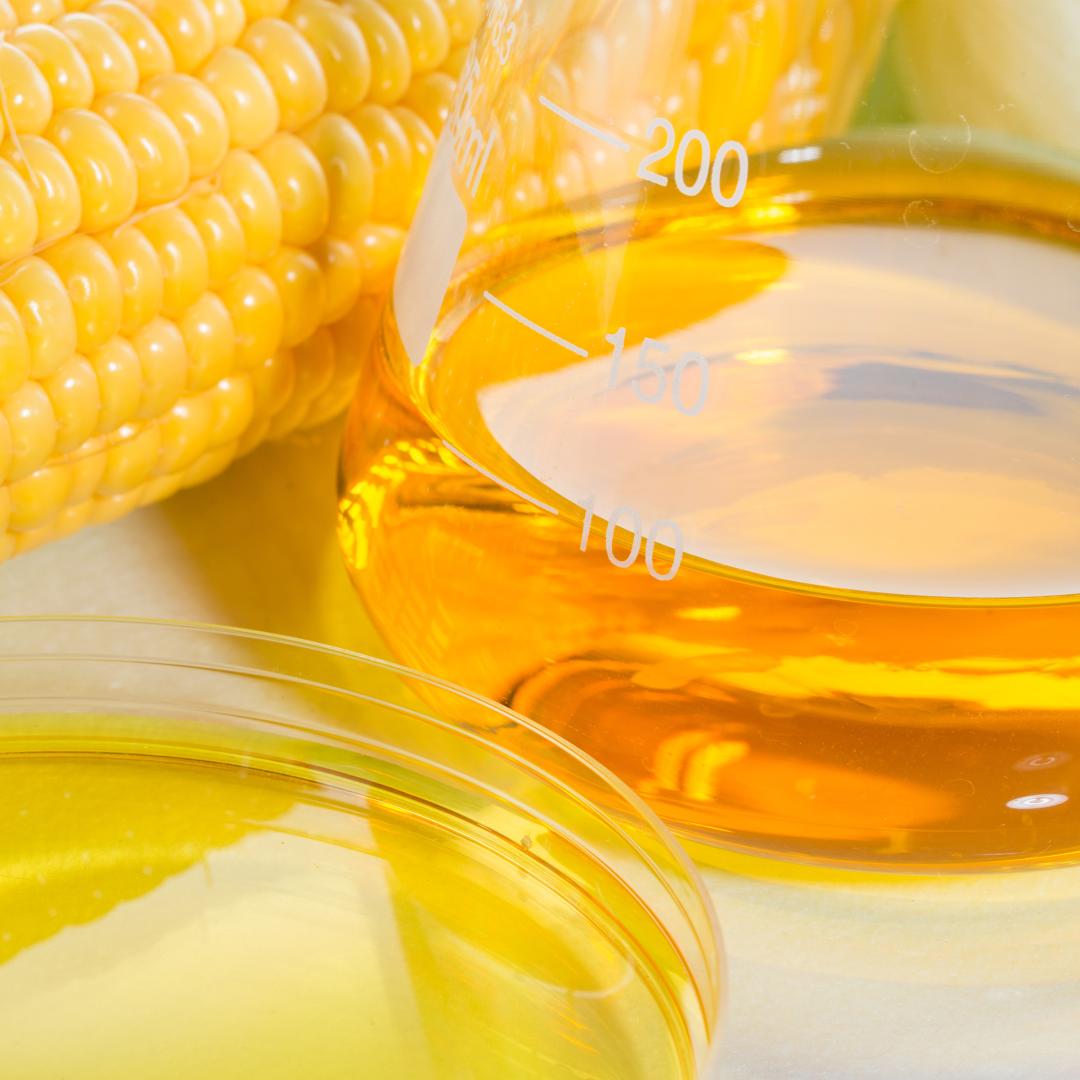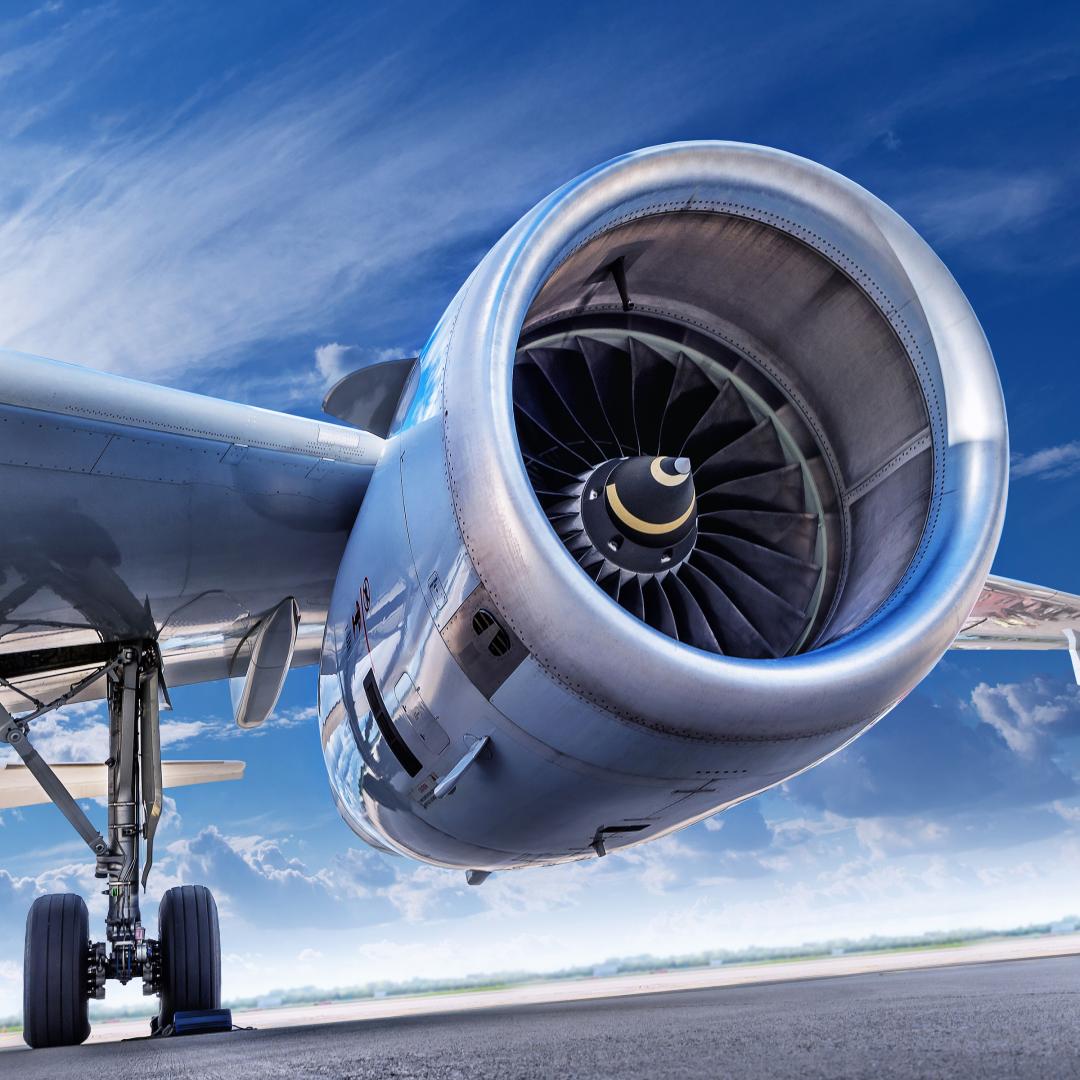Reduce Airplane Contrails




Improving fishing vessel efficiency cuts CO₂ emissions in wild capture fisheries by lowering fuel use through vessel, gear, or operational modifications. Advantages include the long-term cost savings from fuel use reductions, the ability to implement many of these improvements without reducing fishing effort, and the potential additional benefits for air quality and marine ecosystems. Disadvantages include its limited climate impact due to the sector’s overall small contribution to global GHG emissions and the possibly high up-front costs associated with vessel or gear upgrades. We conclude that, despite its modest emissions impact, Improve Fishing Vessel Efficiency is “Worthwhile,” with likely ecosystem and economic benefits.
Based on our analysis, we find that fishing vessel efficiency improvements are ready to deploy and feasible, but probably have limited climate impact because the wild capture fisheries sector contributes a relatively small share of global GHG emissions. These improvements will likely provide long-term cost savings and added benefits for ecosystems and air quality. We conclude this climate solution is “Worthwhile.”
| Plausible | Could it work? | Yes |
|---|---|---|
| Ready | Is it ready? | Yes |
| Evidence | Are there data to evaluate it? | Yes |
| Effective | Does it consistently work? | Yes |
| Impact | Is it big enough to matter? | No |
| Risk | Is it risky or harmful? | No |
| Cost | Is it cheap? | ? |
Improving fishing vessel efficiency reduces CO₂ emissions by using gear, vessel, or operational changes that lower fuel use in wild capture fisheries. Vessel upgrades include propulsion-related changes, such as installation of more efficient engines, and non-propulsion-related alterations, such as modified bows and hulls that reduce drag. Changing to low-fuel-use gear to catch fish, when and where possible, can also reduce CO₂ emissions. Operational changes, such as speed reductions or route optimization, can likewise lead to more efficient fuel use.
Vessel efficiency improvements are expected to deliver substantial fuel savings. An estimated 60–90% of emissions in wild capture fisheries, which emit roughly 0.18 Gt CO₂‑eq/yr in total, likely result from fuel consumption. Speed reductions alone can reduce fuel use by up to 30%. Vessel modifications could provide fuel savings of up to 20% in small fishing vessels, which comprise roughly 86% of all motorized fishing vessels globally. Upgrading engines and other propulsion-related equipment can reduce fuel use by up to 30%. Gear switching, when viable, can also be highly effective at improving fuel use efficiency, particularly if the target species are typically caught using methods such as trawling, which has a high carbon footprint.
The average emissions per metric ton of landed fish in wild capture fisheries have grown by over 20% since 1990, highlighting the need for efficiency improvements. Many of these improvements can be implemented without sacrificing fishing effort or opportunities, and some operational changes, such as reducing vessel speed, can be done without any new equipment. All changes reduce fuel use, saving fishers money over time and likely resulting in fewer emissions of harmful air pollutants, such as sulfur oxides and black carbon. Some upgrades could deliver additional benefits to air quality and ocean ecosystems. Cleaner engines can further reduce air pollution through more complete combustion of fuel, and gear changes could benefit seafloor ecosystems, which can be damaged from bottom fishing practices, such as trawling and dredging. Additionally, some fishing gear has high bycatch rates, and switching to gear that allows for more exclusive capture of target species can reduce waste.
Even with widespread adoption, efficiency improvements that reduce fuel use are unlikely to have a major climate impact. Efficiency improvements could also inadvertently encourage increases in fishing effort, which would increase fuel use and offset emissions cuts. Initial costs to upgrade can be highly variable, but might be high in some cases and therefore not feasible for some fishers. Gear switching can result in lower fish catches, as some methods might not be as efficient. Some operational changes, such as reducing speeds, could lead to fishers arriving at fishing grounds late.
Althaus, F., Williams, A., Schlacher, T. A., Kloser, R. J., Green, M. A., Barker, B. A., ... & Schlacher-Hoenlinger, M. A. (2009). Impacts of bottom trawling on deep-coral ecosystems of seamounts are long-lasting. Marine Ecology Progress Series, 397, 279–294. Link to source: https://doi.org/10.3354/meps08248
Bastardie, F., Hornborg, S., Ziegler, F., Gislason, H., & Eigaard, O. R. (2022). Reducing the fuel use intensity of fisheries: through efficient fishing techniques and recovered fish stocks. Frontiers in Marine Science, 9, 817335. Link to source: https://doi.org/10.3389/fmars.2022.817335
Bastardie, F., Feary, D. A., Kell, L., Brunel, T. P. A., Metz, S., Döring, R., ... & van Hoof, L. J. W. (2022). Climate change and the Common Fisheries Policy: adaptation and building resilience to the effects of climate change on fisheries and reducing emissions of greenhouse gases from fishing. European Commission. Link to source: https://doi.org/10.2926/155626
Gilman, E., Perez Roda, A., Huntington, T., Kennelly, S. J., Suuronen, P., Chaloupka, M., & Medley, P. A. H. (2020). Benchmarking global fisheries discards. Scientific Reports, 10(1), 14017. Link to source: https://doi.org/10.1038/s41598-020-71021-x
Gulbrandsen, O. (2012). Fuel savings for small fishing vessels. Food and Agriculture Organization of the United Nations. Link to source: https://www.fao.org/4/i2461e/i2461e.pdf
Gray, C. A., & Kennelly, S. J. (2018). Bycatches of endangered, threatened and protected species in marine fisheries. Reviews in Fish Biology and Fisheries, 28(3), 521–541. Link to source: https://doi.org/10.1007/s11160-018-9520-7
Food and Agriculture Organization of the United Nations. (2018). The state of world fisheries and aquaculture. Food and Agriculture Organization of the United Nations. Link to source: https://openknowledge.fao.org/handle/20.500.14283/i9540en
Food and Agriculture Organization of the United Nations. (2018). Impacts of climate change on fisheries and aquaculture. United Nations’ Food and Agriculture Organization, 12(4), 628-635. Link to source: https://fao.org/3/i9705en/i9705en.pdf
Food and Agriculture Organization of the United Nations. (2024). The State of World Fisheries and Aquaculture 2024 – Blue Transformation in action. Food and Agriculture Organization of the United Nations. Link to source: https://openknowledge.fao.org/handle/20.500.14283/cd0683en
Hilborn, R., Amoroso, R., Collie, J., Hiddink, J. G., Kaiser, M. J., Mazor, T., ... & Suuronen, P. (2023). Evaluating the sustainability and environmental impacts of trawling compared to other food production systems. ICES Journal of Marine Science, 80(6), 1567–1579. Link to source: https://doi.org/10.1093/icesjms/fsad115
Parker, R. W., Blanchard, J. L., Gardner, C., Green, B. S., Hartmann, K., Tyedmers, P. H., & Watson, R. A. (2018). Fuel use and greenhouse gas emissions of world fisheries. Nature Climate Change, 8(4), 333–337. Link to source: https://doi.org/10.1038/s41558-018-0117-x
United Nations Global Compact and World Wildlife Fund. (2022). Setting science-based targets in the seafood sector: Best practices to date. Link to source: https://unglobalcompact.org/library/6050
United Nations Conference on Trade and Development (UNCTAD). (2024). Energy Transition of Fishing Fleets: Opportunities and Challenges for Developing Countries (UNCTAD/DITC/TED/2023/5). Geneva: UNCTAD. Link to source: https://unctad.org/system/files/official-document/ditcted2023d5_en.pdf

Corn ethanol, an alcohol made by fermenting corn grain, is the most produced and used biofuel in the United States. The U.S. Renewable Fuel Standard requires that corn ethanol be blended with gasoline for the intended purpose of reducing transportation emissions. Ethanol is a useful vehicle fuel additive that improves engine performance and reduces air pollution. However, life cycle emissions analyses show that corn ethanol does not reduce GHG emissions as claimed and, more likely, increases emissions by 24% compared to gasoline alone. One-third of the corn grown in the U.S. is now used to produce more than 15 billion gallons of ethanol per year. This huge demand for corn has increased prices and driven the conversion of unfarmed land and natural ecosystems. The higher demand for corn also led to more fertilizer use on farms, resulting in increased pollution and nitrous oxide emissions. Based on these life cycle analyses, we conclude that using corn ethanol is "Not Recommended" as a climate solution.
The use of corn ethanol as a transportation biofuel, which has led to the expansion and intensification of corn production, does not reduce GHG emissions compared to gasoline. Based on this finding, using corn ethanol is not a plausible approach for reducing emissions and is “Not Recommended” as a climate solution.
| Plausible | Could it work? | No |
|---|---|---|
| Ready | Is it ready? | Yes |
| Evidence | Are there data to evaluate it? | Yes |
| Effective | Does it consistently work? | No |
| Impact | Is it big enough to matter? | No |
| Risk | Is it risky or harmful? | No |
| Cost | Is it cheap? | No |
Corn ethanol is a liquid biofuel that is blended with gasoline to displace a fraction of the petroleum-based fuel with a renewable fuel derived from plants. Proponents claim that blending corn ethanol with gasoline reduces emissions because the CO₂ produced from combusting the ethanol is offset, or balanced out, by the atmospheric CO₂ absorbed by the corn plant during growth. Corn ethanol is made from corn grain by breaking down the starch in the kernels into sugar and then fermenting it into a liquid. In the United States, the world leader in biofuel production, almost 90% of biofuel is corn ethanol. Most gasoline now sold in the U.S. contains about 10% corn ethanol, and, in 2025, the Renewable Fuel Standard (RFS) program requires production of more than 15 billion gallons of this biofuel. Currently, it is primarily made from corn kernels; the technology for producing biomass-derived ethanol from other, non-edible parts of the corn plant is not yet commercially viable. Brazil is the second-largest producer of ethanol, but uses sugarcane as a feedstock.
The Renewable Fuel Standard requires that the life cycle emissions from corn ethanol be at least 20% lower than those of conventional gasoline. However, based on comprehensive life cycle emissions analyses, using corn ethanol does not reduce emissions compared to gasoline. The main reasons for this are that the production of corn and processing it into ethanol generate large amounts of emissions, including from land conversion, fertilizer-related nitrous oxide emissions, and the industrial process of fermenting the corn into ethanol. The most prominent recent study reported that corn ethanol life cycle emissions were, at best, no less than gasoline and, more likely, were 24% higher. Corn ethanol is also more emissions-intensive than ethanol made from other plants, like sugar cane.
Ethanol has been used as a transportation fuel, including as a blend with gasoline, for more than a century. It boosts the octane number of fuel, improves engine performance and fuel economy, and reduces emissions of harmful pollutants like unburned hydrocarbons, nitrogen oxides, and particulates. Ethanol has also been used to replace other harmful and polluting gasoline additives, including lead and methyl tert-butyl ether (MTBE). Ethanol produced from non-edible biological feedstocks with lower production emissions, such as switchgrass or cellulose from crop residues, has the potential to reduce emissions.
The Renewable Fuel Standard (RFS) program requires that biofuels be blended into the transportation fuel supply at annually increasing increments. The United States now uses one-third of its corn to generate more than 15 billion gallons of ethanol per year. Not only does this mandated program not reduce emissions (it more likely increases emissions), but it also consumes corn that could otherwise be used for food or animal feed. The increased demand for corn for ethanol has increased corn prices, which in turn have contributed to the conversion of grasslands and semi-natural ecosystems to grow more corn. When grasslands, woodlands, or other natural ecosystems are plowed and converted to cropland, the carbon stored in the vegetation and soil is emitted to the atmosphere. Between 2008 and 2016, the conversion of 1.8 Mha of natural and semi-natural land in the U.S. released about 400 million metric tons of CO₂ from vegetation and soil. The increased corn production also increased the application of synthetic fertilizers, which has increased nitrate leaching, phosphorus runoff, and emissions of nitrous oxide, a powerful GHG (see Improve Nutrient Management). These problems are particularly severe in the U.S. Midwest and the Mississippi River drainage.
Broda, M., Yelle, D. J., & Serwańska, K. (2022). Bioethanol production from lignocellulosic biomass—challenges and solutions. Molecules, 27(24), 8717. Link to source: https://www.mdpi.com/1420-3049/27/24/8717
California Air Resources Board (CARB) (2003). Cleaner Burning Gasoline without MTBE. Link to source: https://ww2.arb.ca.gov/resources/fact-sheets/cleaner-burning-gasoline-without-mtbe
Cassidy, E. (2014). Ethanol’s Broken Promise. Environmental Working Group. Link to source: https://www.ewg.org/research/ethanols-broken-promise
Ciolkosz, D. (2024). Fuel Ethanol: Hero or Villain? Penn State Extension. Link to source: https://extension.psu.edu/fuel-ethanol-hero-or-villain
Douglas, L. (2022). U.S. corn-based ethanol worse for the climate than gasoline, study finds. Reuters. Link to source: https://www.reuters.com/business/environment/us-corn-based-ethanol-worse-climate-than-gasoline-study-finds-2022-02-14/
EPA (U.S. Environmental Protection Agency) (2023). Renewable Fuel Standard (RFS) Program: Standards for 2023–2025 and Other Changes Lifecycle Greenhouse Gas Results. Federal Register/Vol. 88, No. 132/Wednesday, July 12, 2023/Rules and Regulations. Link to source: https://www.govinfo.gov/content/pkg/FR-2023-07-12/pdf/2023-13462.pdf
EPA (U.S. Environmental Protection Agency) (2025a). Overview of the Renewable Fuel Standard Program. Link to source: https://www.epa.gov/renewable-fuel-standard/overview-renewable-fuel-standard-program
EPA (U.S. Environmental Protection Agency) (2025b). Lifecycle Greenhouse Gas Results. Link to source: https://www.epa.gov/fuels-registration-reporting-and-compliance-help/lifecycle-greenhouse-gas-results
Hill, J. (2022). The sobering truth about corn ethanol. Proceedings of the National Academy of Sciences, 119(11), e2200997119. Link to source: https://doi.org/10.1073/pnas.2200997119
Kramer, D. (2022). Whatever happened to cellulosic ethanol? Physics Today, 75(7), 22-24. Link to source: https://doi.org/10.1063/PT.3.5036
Lark, T. J., Hendricks, N. P., Smith, A., Pates, N., Spawn-Lee, S. A., Bougie, M., ... & Gibbs, H. K. (2022). Environmental outcomes of the US renewable fuel standard. Proceedings of the National Academy of Sciences, 119(9), e2101084119. Link to source: https://doi.org/10.1073/pnas.2101084119
Lark, T. J., Salmon, J. M., & Gibbs, H. K. (2015). Cropland expansion outpaces agricultural and biofuel policies in the United States. Environmental Research Letters, 10(4), 044003. Link to source: http://dx.doi.org/10.1088/1748-9326/10/4/044003
National Library of Medicine (2023). Toxicological Profile for Methyl tert-Butyl Ether (MTBE). Agency for Toxic Substances and Disease Registry (US); CHAPTER 1, RELEVANCE TO PUBLIC HEALTH. Link to source: https://www.ncbi.nlm.nih.gov/books/NBK601216/
Robertson, G. P., Dale, V. H., Doering, O. C., Hamburg, S. P., Melillo, J. M., Wander, M. M., ... & Wilhelm, W. W. (2008). Sustainable biofuels redux. Science, 322(5898), 49–50. Link to source: https://lter.kbs.msu.edu/docs/robertson/robertson_et_al._2008_science.pdf
Searchinger, T. et al. (2008) Use of U.S. Croplands for Biofuels Increases Greenhouse Gases Through Emissions from Land-Use Change. Science 319,1238-1240(2008). Link to source: https://doi.org/10.1126/science.1151861
Spawn, S. A., Lark, T. J., & Gibbs, H. K. (2019). Carbon emissions from cropland expansion in the United States. Environmental Research Letters, 14(4), 045009. Link to source: https://doi.org/10.1088/1748-9326/ab0399
Tilman, D., Socolow, R., Foley, J. A., Hill, J., Larson, E., Lynd, L., ... & Williams, R. (2009). Beneficial biofuels—the food, energy, and environment trilemma. Science, 325(5938), 270-271. Link to source: https://doi.org/10.1126/science.1177970
Wright, C. K., Larson, B., Lark, T. J., & Gibbs, H. K. (2017). Recent grassland losses are concentrated around US ethanol refineries. Environmental Research Letters, 12(4), 044001. Link to source: https://doi.org/10.1088/1748-9326/aa6446

Green hydrogen is an emissions-free fuel produced by using renewable electricity to split water into hydrogen and oxygen. For aviation and long-haul trucking, green hydrogen can be used either directly in fuel cells or combusted in modified engines, offering a potential pathway to deep emissions reductions. It generates no CO₂ at the point of use, and when produced with clean power, life-cycle emissions can be near zero. However, green hydrogen faces major barriers in terms of energy intensity, infrastructure needs, cost, and vehicle redesign. We will “Keep Watching” Mobilize Green Hydrogen for Aviation and Trucking due to its high potential impact, even though it is not yet ready for widespread deployment.
Based on our analysis, green hydrogen holds long-term potential in sectors that are difficult to decarbonize, particularly long-haul aviation and freight trucking. It is technologically feasible, but currently hampered by high costs, severe infrastructure gaps, and limited commercial readiness. While it is unlikely to be deployed at scale this decade, we will “Keep Watching” green hydrogen as innovation and policy evolve.
| Plausible | Could it work? | Yes |
|---|---|---|
| Ready | Is it ready? | No |
| Evidence | Are there data to evaluate it? | Yes |
| Effective | Does it consistently work? | Yes |
| Impact | Is it big enough to matter? | Yes |
| Risk | Is it risky or harmful? | No |
| Cost | Is it cheap? | No |
Green hydrogen is a clean, emissions-free liquid fuel produced through electrolysis powered by renewable energy that can replace fossil fuels in some transportation sectors. Unlike hydrogen from fossil fuels (gray or blue hydrogen), green hydrogen generates no CO₂ emissions during production. For transportation, green hydrogen can be used in two main ways: (1) in fuel cell electric vehicles (FCEVs) to generate electricity onboard and power electric motors, or (2) combusted in specially designed hydrogen combustion engines or turbines. For aviation, liquid hydrogen may fuel aircraft engines directly, be used to produce synthetic jet fuels, or power fuel cell airplanes. For long-haul trucking, hydrogen can replace diesel by powering fuel cell trucks, which offer long range and fast refueling.
Green hydrogen is being produced and used in pilot projects and select transportation initiatives globally. Hydrogen combustion engines and fuel cells are currently in use and have been shown to reduce emissions compared to fossil fuels. For aviation, aircraft manufacturers, such as Airbus, have hydrogen-powered planes in development, with test flights expected by 2030, but it could be several decades before they are put into commercial use. In heavy-duty trucking, several major automakers, including Toyota and Hyundai, have already commercialized hydrogen trucks in limited markets, such as China and Japan.
Green hydrogen is one of the few near-zero-emission fuels with the potential to decarbonize aviation and long-haul trucking, where battery-electric solutions currently face range and weight constraints. If produced using abundant, low-cost renewables, green hydrogen could significantly cut emissions in sectors responsible for nearly 15% of global transport emissions. In aviation, hydrogen-based fuels like e-kerosene could save around five million tons of CO₂ per year in Europe by 2030. In trucking, hydrogen fuel cell vehicles are beginning to roll out but remain a niche market. Looking ahead, hydrogen has strong potential: by 2050, it could meet up to 30% of energy demand in long-haul trucking and significantly reduce aviation emissions, particularly for short- and medium-haul flights, but it will have to compete with advances in battery-electric options. Hydrogen enables fast refueling and long range, making it a strong candidate for freight and intercity applications. Additionally, investment in green hydrogen infrastructure could unlock cross-sectoral benefits, supporting decarbonization of industry, power, and potentially heating. As electrolyzer costs fall and renewable power expands, the economics and emissions profile of green hydrogen are likely to improve.
Despite its promise, green hydrogen for transport faces significant technical, economic, and logistical hurdles. Electrolysis is energy-intensive, and green hydrogen production is still expensive (US$300–600/t CO₂ avoided for trucking and US$500–1500/t CO₂ for aviation), making it much more costly than diesel or jet fuel but comparable to sustainable aviation fuel today. It is also less energy-dense by volume than other fuels, requiring complex transportation and storage (especially for aviation, where cryogenic tanks are needed) and limiting payload capacity. In addition to producing contrails, hydrogen leakage, though not a GHG, can contribute to indirect global warming effects. There are also safety concerns related to flammability and explosiveness, and a complete overhaul of transportation and refueling infrastructure is needed for both aviation and trucking. Green hydrogen requires entirely new infrastructure for production, storage, and distribution, including refueling stations for trucks and specialized handling systems for liquid or compressed hydrogen at each airport the airplane uses. The absence of this infrastructure creates a major barrier to adoption in aviation and long-haul trucking, where fuel logistics, safety standards, and scale are critical for commercial viability. Hydrogen remains a niche fuel due to its low energy density per volume, the need for cryogenic storage in aviation, limited refueling infrastructure, and high cost. While technically viable, major deployment for aviation and trucking is still nascent. Without a clear business case or strong policy incentives, uptake will remain limited in the near term.
Clean Hydrogen Partnership. (2020). Hydrogen-powered aviation. Link to source: https://www.clean-hydrogen.europa.eu/media/publications/hydrogen-powered-aviation_en
Clean Hydrogen Partnership. (2020). Study on fuel cells hydrogen trucks. Link to source: https://www.clean-hydrogen.europa.eu/media/publications/study-fuel-cells-hydrogen-trucks_en
Galimova, T., Fasihi, M., Bogdanov, D., & Breyer, C. (2023). Impact of international transportation chains on cost of green e-hydrogen: Global cost of hydrogen and consequences for Germany and Finland. Applied Energy, 347, 121369. Link to source: https://doi.org/10.1016/j.apenergy.2023.121369
Gulli, C., Heid, B., Noffsinger, J., Waardenburg, M., & Wilthaner, M. Global energy perspective 2023: Hydrogen outlook. Link to source: https://www.mckinsey.com/industries/oil-and-gas/our-insights/global-energy-perspective-2023-hydrogen-outlook International Energy Agency. (2019). The Future of hydrogen – analysis. IEA. Link to source: https://www.iea.org/reports/the-future-of-hydrogen
International Renewable Energy Agency. (2022). Green hydrogen for industry: A guide to policy making. Link to source: https://www.irena.org/publications/2022/Mar/Green-Hydrogen-for-Industry
Jaramillo, P., Ribeiro, S. K., Newman, P., Dhar, S., Diemuodeke, O. S., Kajino, T., Lee, D. S., Nugroho, S. B., Ou, X., Strømman, A. H., & Whitehead, J. (2022). Transport. In P.R. Shukla, J. Skea, R. Slade, A. Al Khourdajie, R. van Diemen, D. McCollum, M. Pathak, S. Some, P. Vyas, R. Fradera, M. Belkacemi, A. Hasija, G. Lisboa, S. Luz, & J. Malley, (Eds.), Climate change 2022: Mitigation of climate change. Contribution of working group III to the sixth assessment report of the intergovernmental panel on climate change (Chapter 10). Cambridge University Press. Link to source: https://10.1017/9781009157926.012
Li, Y., & Taghizadeh-Hesary, F. (2022). The economic feasibility of green hydrogen and fuel cell electric vehicles for road transport in China. Energy Policy, 160, 112703. Link to source: https://doi.org/10.1016/j.enpol.2021.112703

Sustainable aviation fuel (SAF) is a low-carbon alternative to conventional jet fuel. It is made from renewable feedstocks, including waste oils, agricultural residues, and renewable electricity. SAF can substantially reduce life-cycle GHG emissions and is already in use in commercial flights at low blending levels. Advantages include its compatibility with existing aircraft and fueling infrastructure, its potential to reduce emissions for long-haul aviation, and its ability to reduce emissions from organic waste streams. Disadvantages include limited feedstock availability, high costs, variable climate benefits depending on production methods, and challenges in scaling up supply to meet global demand. Based on our assessment, we will “Keep Watching” this potential solution.
Based on our analysis, sustainable aviation fuel (SAF) is a promising climate mitigation solution for reducing emissions in the aviation sector, particularly for long-haul flights where few alternatives exist. However, it is not yet cost-effective and faces significant challenges to scaling production due to severe feedstock restraints, land use pressure, and the need to meet robust sustainability standards. Based on our assessment, we will “Keep Watching” this potential solution.
| Plausible | Could it work? | Yes |
|---|---|---|
| Ready | Is it ready? | Yes |
| Evidence | Are there data to evaluate it? | Yes |
| Effective | Does it consistently work? | Yes |
| Impact | Is it big enough to matter? | Yes |
| Risk | Is it risky or harmful? | No |
| Cost | Is it cheap? | No |
SAF is a low-carbon alternative to conventional jet fuel that reduces life-cycle greenhouse gas emissions from fuel production by using only non-petroleum feedstocks such as waste oils, agricultural residues, and municipal solid waste. It is usually produced using renewable electricity and captured CO₂. SAF is produced through chemical processes that convert these feedstocks into fuels that meet the same technical standards as fossil-based jet fuel, allowing them to be blended and used in existing aircraft engines and fueling infrastructure without modification. All SAFs approved by ASTM International, the body that sets fuel standards for aviation, are certified only for use in blends. No SAF is yet certified for 100% use in commercial aircraft (also known as “neat SAF”) for passenger flights.
The basic idea of sustainable aviation fuel is technologically sound and supported by decades of research into low-carbon fuel alternatives for aviation. Multiple SAF production pathways – such as hydroprocessed esters and fatty acids (HEFA), Fischer-Tropsch synthesis (FT), and alcohol-to-jet (ATJ) – have been approved by international aviation standards bodies, and several have been demonstrated at commercial scale. Real-world use of SAF is already underway: More than 450,000 commercial flights have flown using SAF blends as of early 2025. SAF is currently being supplied at major airports in Europe, the United States, and Asia, with dozens of airlines integrating SAF into operations or entering offtake agreements. While current production remains limited (less than 0.5% of global jet fuel supply), government mandates, tax credits, and airline demand are driving the need for rapid scale-up. SAF is considered one of the most evidence-backed and immediately deployable climate solutions for reducing aviation emissions.
Sustainable aviation fuel offers several compelling advantages that make it a potential pathway for reducing aviation emissions. By reducing emissions 60-70% per metric ton compared to jet fuel, SAF could potentially avoid 0.1–0.2 Gt CO₂/yr by 2050. It can also reduce contrails. SAF can be used in existing aircraft and fueling systems without requiring new infrastructure or major redesigns. This makes it one of the few ready-to-deploy solutions for long-haul and international flights, which are difficult to electrify or replace. SAF production from waste oils and residues can also deliver benefits such as reduced methane emissions from organic waste streams and improved waste management. SAF offers a potentially scalable, technically feasible route to emissions reductions in a sector with few alternatives. Growing policy support, rising carbon prices, and airline demand are accelerating development.
Despite its promise, sustainable aviation fuel faces significant limitations, risks, and challenges that could constrain its impact and scalability. First, supply is a critical constraint. Due to limited feedstock availability, SAF is highly unlikely to be able to meet the ambitious 2050 goals set by ICAO, ReFuelEU Aviation, and other industry organizations, associations, and governmental institutions. This means that SAF must be combined with other strategies, like demand reduction and new aircraft technologies, to achieve full decarbonization. There are also major ecological and social risks, including competition for land and feedstocks that could displace food production or degrade ecosystems, as well as unequal access to the benefits of SAF deployment. Scaling synthetic SAF (e-fuels) requires vast amounts of clean electricity, water, and CO₂ – raising concerns about resource use and trade-offs with other sectors. Another major concern is cost. Current SAF prices are substantially higher than fossil jet fuel, ranging from US$300 to more than US$1,500/t CO₂ avoided, depending on the pathway. Without strong policy support, this cost premium poses a barrier to widespread adoption. Additionally, life-cycle emissions reductions vary widely depending on the feedstock and production pathway. While some SAFs (e.g., e-fuels using renewable electricity) can achieve near-zero emissions, others, especially those using food crops or poorly regulated waste streams, may deliver modest or uncertain climate benefits. Measurement, reporting, and verification of actual emissions reductions can be complex, especially when land-use change, indirect emissions, or supply chain impacts are involved. SAF combustion still contributes to climate impacts from contrails (albeit reduced compared to jet fuel), nitrogen oxides, and soot.
Alternative Fuels Data Center. (n.d.). Sustainable Aviation Fuel. Link to source: https://afdc.energy.gov/fuels/sustainable-aviation-fuel
Bardon, P., & Massol, O. (2025). Decarbonizing aviation with sustainable aviation fuels: Myths and realities of the roadmaps to net zero by 2050. Renewable and Sustainable Energy Reviews, 211, 115279. Link to source: https://doi.org/10.1016/j.rser.2024.115279
Boyles, H. (2022). Climate-Tech to Watch: Sustainable Aviation Fuel. Link to source: https://itif.org/publications/2022/10/17/climate-tech-to-watch-sustainable-aviation-fuel
Buchholz, N., Fehrm, B., Kaestner, L., Uhrenbacher, S., & Vesco, M. (2023). Study: How To Accelerate Aviation’s CO2 Reduction | Aviation Week Network. Link to source: https://aviationweek.com/air-transport/aircraft-propulsion/study-how-accelerate-aviations-co2-reduction
Bullerdiek, N., Neuling, U., & Kaltschmitt, M. (2021). A GHG reduction obligation for sustainable aviation fuels (SAF) in the EU and in Germany. Journal of Air Transport Management, 92, 102020. Link to source: https://doi.org/10.1016/j.jairtraman.2021.102020
EASA. (2025). Sustainable Aviation Fuels | EASA. Link to source: https://www.easa.europa.eu/en/domains/environment/eaer/sustainable-aviation-fuels
European Commission. (n.d.). ReFuelEU Aviation. Retrieved June 5, 2025 from Link to source: https://transport.ec.europa.eu/transport-modes/air/environment/refueleu-aviation_en
European Union Aviation Safety Agency. (2025). Sustainable aviation fuels. Link to source: https://www.easa.europa.eu/en/domains/environment/eaer/sustainable-aviation-fuels
International Civil Aviation Organization. (n.d.). LTAG costs and investments. Retrieved June 5, 2025 from Link to source: https://www.icao.int/environmental-protection/LTAG/Pages/LTAG-and-Fuels.aspx
International Air Transport Association. (2024). Disappointingly slow growth in SAF production. Link to source: https://www.iata.org/en/pressroom/2024-releases/2024-12-10-03/
International Air Transport Association. (2025). IATA releases SAF accounting and reporting methodology. Link to source: https://www.iata.org/en/pressroom/2025-releases/2025-01-31-01/
International Civil Aviation Organization. (n.d.). Sustainable aviation fuels. Retrieved June 5, 2025 from Link to source: https://www.icao.int/environmental-protection/pages/SAF.aspx
Prussi, M., Lee, U., Wang, M., Malina, R., Valin, H., Taheripour, F., Velarde, C., Staples, M. D., Lonza, L., & Hileman, J. I. (2021). CORSIA: The first internationally adopted approach to calculate life-cycle GHG emissions for aviation fuels. Renewable and Sustainable Energy Reviews, 150, Article 111398. Link to source: https://doi.org/10.1016/j.rser.2021.111398
Rojas-Michaga, M. F., Michailos, S., Cardozo, E., Akram, M., Hughes, K. J., Ingham, D., & Pourkashanian, M. (2023). Sustainable aviation fuel (SAF) production through power-to-liquid (PtL): A combined techno-economic and life cycle assessment. Energy Conversion and Management, 292, Article 117427. Link to source: https://doi.org/10.1016/j.enconman.2023.117427
Shahriar, M. F., & Khanal, A. (2022). The current techno-economic, environmental, policy status and perspectives of sustainable aviation fuel (SAF). Fuel, 325, Article 124905. Link to source: https://doi.org/10.1016/j.fuel.2022.124905
Watson, M. J., Machado, P. G., da Silva, A. V., Saltar, Y., Ribeiro, C. O., Nascimento, C. A. O., & Dowling, A. W. (2024). Sustainable aviation fuel technologies, costs, emissions, policies, and markets: A critical review. Journal of Cleaner Production, 449, Article 141472. Link to source: https://doi.org/10.1016/j.jclepro.2024.141472
Yoo, E., Lee, U., & Wang, M. (2022). Life-cycle greenhouse gas emissions of sustainable aviation fuel through a net-zero carbon biofuel plant design. ACS Sustainable Chemistry & Engineering, 10(27), 8725–8732. Link to source: https://doi.org/10.1021/acssuschemeng.2c00977
Zahid, I., Nazir, M. H., Chiang, K., Christo, F., & Ameen, M. (2024). Current outlook on sustainable feedstocks and processes for sustainable aviation fuel production. Current Opinion in Green and Sustainable Chemistry, 49, Article 100959. Link to source: https://doi.org/10.1016/j.cogsc.2024.100959



Join the 85,000+ subscribers discovering how to drive meaningful climate action around the world! Every other week, you'll get expert insights, cutting-edge research, and inspiring stories.